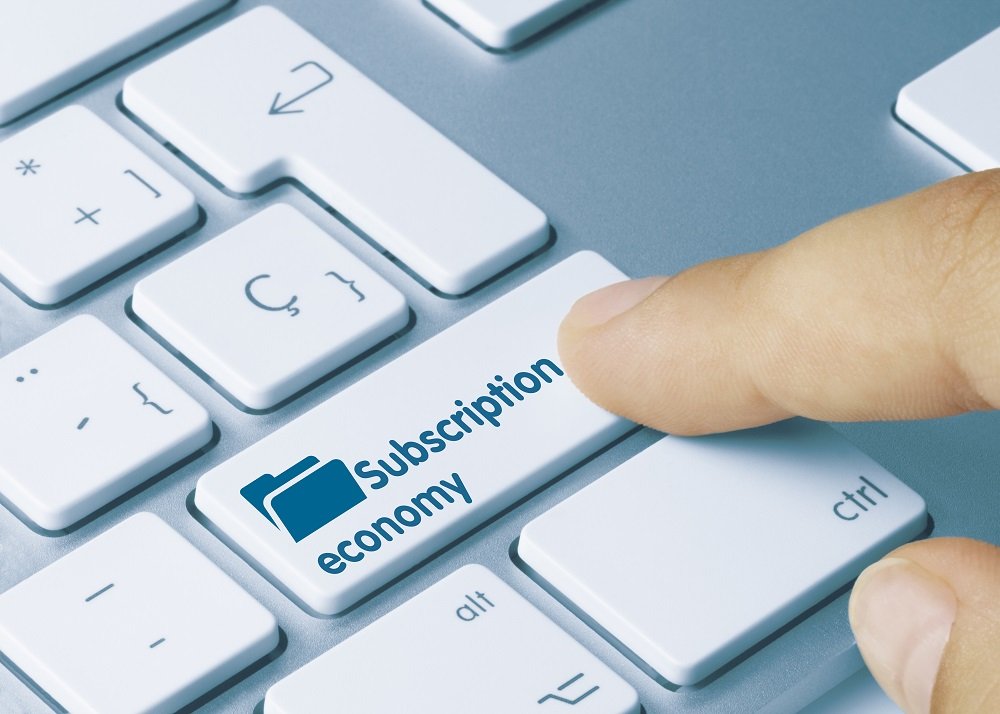Managing Subscriptions and Paying Yourself First
Over the last several years, things that we used to pay for atomically have now become subscriptions.
Whether we pay for Netflix instead of renting individual movies, paying a subscription for our computer’s Operating Systems, or even paying a monthly fee for video game access versus buying the games outright subscriptions have become the norm.
But are subscriptions a good thing? How do we manage them and gauge when they are getting out of control? I’ll cover this and more in this article.

What We'll Cover in this Article
Subscriptions as a more Stable Business
Businesses both large and small have embraced the idea of charging small reoccurring fees instead of trying to get consumers to pay large upfront costs.
The mental hurdle a consumer has to overcome before initiating a purchase is much lower… and thus businesses are able to appeal to a larger consumer base that may have lower initial capital to divvy up.
Companies are incentived to convert their customers into an ongoing stream of revenue. It lowers the risk with expensive products and can even result in a consumer paying more over time when compared to if they had paid a much larger amount up front.
In fact, according to a ‘how-to guide,’ written by salesforce, details the process to transition a business to subscription model. Subscription models apparently allow a company to maximize its growth potential… but why? It’s more profitable of course!
A Businesses Gains are Your Losses
So, if subscriptions are more profitable for a company that means that it is less profitable for its consumers. This is a zero-sum situation. Moving money from one side of the equation ends up on the other side.
For some products, however, paying for a subscription is the only way to access a particular service… like content streaming services such as Netflix and Amazon Prime.
But that doesn’t mean you still don’t have to exert a level of control. Subscriptions can add up. The increased cost of a subscription combined with the fact that numerous products now require them results in a net negative for the consumer.
A great example of this is comparing a legacy cable bill to the combined costs of various streaming packages. If you were to add up all the costs of each network’s streaming service and compare it to the cost of a cable subscription, then you will find that the sum of the parts is indeed way more expensive.
Streaming services have caught on to how beneficial it can be to engage consumers directly and establish a reoccurring stream of their own. Limiting the impact of this on our finances is becoming more critical by the day.
Budget Each Subscription
Adding the cost of each of your subscriptions together for a particular theme such as ‘viewing content’ is a good way to start to get a grasp of how much you are spending. If you your goal is to spend only $50 on streaming content, then you may have to pick and choose which service you are going to use for the month.
Some subscriptions are unique and charge you less frequently. Don’t let this fool you. Split up the annual cost and put it in your monthly budget so that when it comes time to pay for it you have fully accounted for it.
Microsoft Office and Amazon Prime are great examples of an annual charges that can feel like they appear out of nowhere.
Once you have set a budget for each subscription category, make sure you track the outflows.
On more than one occasion I have realized that my wife and I were paying for the same service. I only caught it after I saw the charge on our accounts. Additionally, I have found that I have been paying for individual services only to also be paying for a bundle that already has that feature.
Disney+ and their packages are notorious for letting you have multiple packages that overlap.
Don’t Forget to Bundle
You should always be on the look out for bundles… particularly with streaming services. For example, if you have Verizon Cell Service, most of the packages they have also bundle in Disney+ and other streaming services.
If you are streaming ESPN+, Disney+ or Hulu then these can also be bundled. I just got a notice while I am writing this article that Xbox Live was bundling in YouTube Premium… if these two found a way to marry each other together then the sky appears to be the limit when it comes to bundling.
Beyond bundling, promotional periods are also common. If you are thinking about subscribing to a service always be sure to see if there are promotional offers. This could manifest as a free trial or even a discounted price in return for a longer commitment.
Cancel What you do Not Use
Cancel what you don’t use! Every service should be on the chopping block each month. You can always cancel and start it back up again if you change your mind. Never let convenience get in your way of paying some company a check each month.
Set a day, perhaps the last day of the month, to go and cancel all the subscriptions you don’t use.
Keeping a list of all your subscriptions in your budget is a great way to manage this. You can quickly scan down each one and ask yourself if you are still using it. If the answer is ‘no’ then cancel it and remove it from your budget the following month.
Make your Savings a Subscription
I have already mentioned that companies have found that getting folks on a subscription ends up with them making more money off their customers. So why not apply this to your own life? Put your savings on the subscription model.
Putting yourself on the subscription savings model is what people mean when they say, ‘Pay Yourself First.’
The chances that you will overpay yourself just like you overpay for other subscriptions goes up. You become less likely to notice the amount of money you are saving if it is automatically being drafted out of your account and sent to either a traditional savings account, IRA or 401(k).
Summary
At the end of the day, companies are going to try and get you to subscribe to just about anything.
It has proven to be exceptionally lucrative to profits. Their profit is ultimately coming at your expense. While many products are only offered as a subscription, ensure that you aren’t letting your monthly obligations for ankle-biter subscriptions get of control.
Budget for them. Track them. Cancel them.
I hope you enjoyed this article! What’s the weirdest subscription you have every paid for? Beer? Soap? There are some strange things out there that you can subscribe… put the strangest one you’ve ever seen down in the comments below.
Guy Money
As a formally trained Data Scientist I find excitement in writing about Personal Finance and how to view it through a lens filtered by data. I am excited about helping others build financial moats while at the same time helping to make the world a more livable and friendly place.



